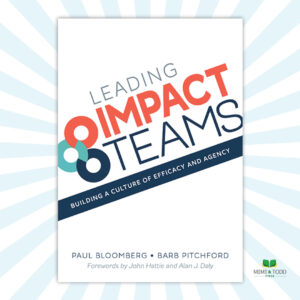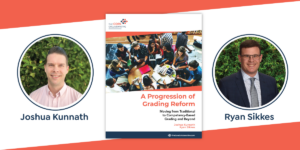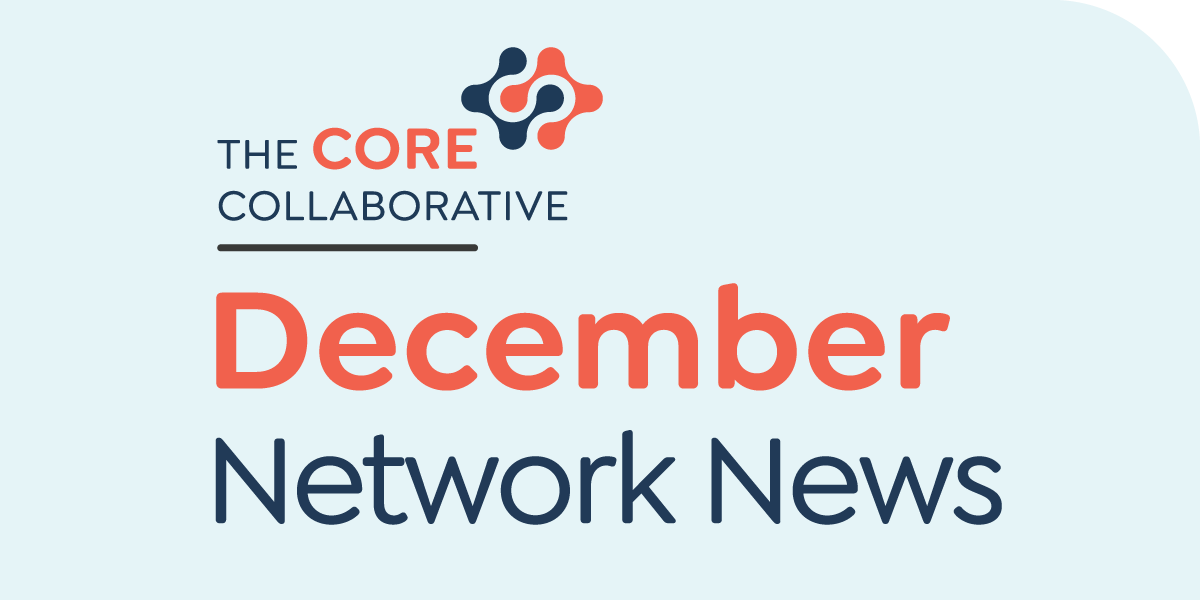Welcome to TCC’s newsletter where we share professional learning insights, highlight our community, and keep you in the loop about upcoming events.


The Value of Creative Problem-Solving
According to David Cozart, the former Superintendent of Paterson Public Schools, “advocacy coming from the grassroots, from the kids in the community has always been a way to make change happen” (Press Release, 2023). To truly grow, organizations must first identify and understand their assets and opportunities for growth if they wish to move beyond quick fixes and implement long-term creative solutions that will lead to positive change.
In Paterson Public Schools, the students and the community have always been the strength, but they were not always part of the conversation concerning improvement. Through a partnership with YES (Youth Equity Stewardship), the Paterson Public School system established an improvement process that united all essential voices- students, educators, and the community. It began by physically gathering these intergenerational parties in one space, building relational trust, and listening to the stories of one another. With a true understanding of the realities of the Paterson Public School students, the community identified social-emotional learning as a growth opportunity and responded with professional development for teachers and peer equity projects for students (i.e. student-created public service announcements/videos).
The Paterson Public School System demonstrated the value of creative problem-solving, a dynamic process organizations undergo to identify and respond to the root causes of a problem. Fueled by ingenuity and inspired by action, this collaborative process moves beyond quick fixes to long-term sustainable solutions, unlocking an organization’s potential for growth.
Engaging in the creative problem-solving process as equal partners has ensured that Paterson’s students have the skills and language needed to address puzzles of practice as they arise in and out of school in the future. Currently, the district is expanding this work in more schools. We can’t wait to see what they do next!

 Moving Beyond Traditional Grading
Moving Beyond Traditional Grading
Do you believe traditional grading practices accurately represent all students’ academic learning and ability?
Joshua Kunnath, Ed.D., and Ryan Sikkes, Ed.D. do not. Their publication, A Progression of Grading Reform: Moving from Traditional to Competency-Based Grading and Beyond, highlights the need for transformative thinking in education. The authors apply the principle of creative problem-solving, articulating how to shift even the most embedded beliefs and practices. The authors argue that traditional grading practices, like other conventional practices, fail to prepare individuals for the unpredictable future because these practices do not clearly communicate the degree to which students have developed disparate knowledge and skills.
The authors propose transitioning to competency-based grading which…
…Includes the processes used to measure and communicate students’ learning that extend from standards-based grading and assessment with additional emphasis on connecting all learning to academic and non-academic core competencies, the ability to transfer knowledge and skills to new and novel situations as an essential component of proficiency, and expanded student agency as demonstrated by increased self-assessment and self-directed learning.
Read this progression to evaluate where you and your system are in the grading journey and guide your next steps.

Leading with Inquiry

Anchored by the tenets of design thinking, collaborative inquiry is a framework that empowers educator teams to innovate to solve puzzles of practice. Throughout their inquiry, teams collect evidence, analyze this evidence, and take intentional action to impact students and scale their expertise.
This process is explored in depth in chapter 4 of Paul Bloomberg and Barb Pitchford’s book, Leading Impact Teams: Building a Culture of Efficacy and Agency. Collaborative inquiry fosters a culture of shared responsibility in which teams use purposeful protocols to identify student needs and respond with targeted, high-leverage strategies.
Read this Collaborative Inquiry Example to see how an elementary team solved a mathematical performance puzzle of practice. Use this Collaborative Inquiry Self-Assessment Rubric to identify what you’re doing well and to guide your next steps so you can refine your process and have even more impact. Try the process yourself using our Inquiry Blueprint Template.

 New Albany High School, Ohio
New Albany High School, Ohio
In an effort to provide the opportunity for many voices to be heard and engage all students in deeper thinking, Brian Schoch, a high school business teacher at New Albany High School (near Columbus, Ohio), recently incorporated the Harkness Protocol into his classroom.
Mr. Schoch selected the Harkness Protocol, a discussion-based teaching method that encourages student-centered learning through collaborative dialogue. To apply the protocol, Mr. Schoch followed the four steps outlined in A Visual, Step-By-Step Guide for Re-Envisioning Rigor: Powerful Routines for Promoting Learning at High Levels, by Michael McDowell and Aaron Eisberg, (see an example below). This approach emphasized critical thinking, active listening, and mutual respect. Students built on one another’s ideas, asked questions to propel the conversation, and supported their viewpoints with evidence.
Mr. Schoch selected the Harkness Protocol, a discussion-based teaching method that encourages student-centered learning through collaborative dialogue. To apply the protocol, Mr. Schoch followed the four steps outlined in A Visual, Step-By-Step Guide for Re-Envisioning Rigor: Powerful Routines for Promoting Learning at High Levels, by Michael McDowell and Aaron Eisberg, (see an example below). This approach emphasized critical thinking, active listening, and mutual respect. Students built on one another’s ideas, asked questions to propel the conversation, and supported their viewpoints with evidence.
Brian reported that students did very well. Using the Harkness Protocol, the learners discussed how they worked around limitations (time, more expensive technology, budget) to produce high-quality work. They also determined an approach to take in the future. Brian will be using this and other engaging protocols in the future because students across all three of his classes achieved their learning target, were engaged in conversation, and generated a list of potential new approaches to consider.
For a fun way to find out more about the 23 other strategies in this great new book, join us live on The Core Collaborative Learning Network’s Facebook page on December 3rd at 5 Pacific/8 Eastern.
Authors Michael McDowell and Aaron Eisberg, along with a few guests, will be there to share insights, answer questions, and celebrate the launch of this powerful new book.


This month we want to highlight the ongoing work of Ryan Sikkes and Josh Kunnath. These two, impressive on their own merits, have teamed up over the last year to tackle competency-based grading and to support districts, schools, teams, and even individual teachers in making the transition. The two co-presented at the Embrace Equity Symposium in Bakersfield, CA focused on Making the Move from Traditional Grading to Competency-Based Grading and Assessment: A Practical Progression of Reform. Ryan is set to present at Learning Forward’s Annual Conference on December 9th. Meanwhile, Josh is hard at work making the dream of learner-centered, competency-based grading a reality in his role as a high school English teacher.
Learn More: Joshua Kunnath Ryan Sikkes


International Human Rights Day is celebrated annually on December 10 to commemorate the adoption of the Universal Declaration of Human Rights (UDHR) by the United Nations General Assembly in 1948. The Universal Declaration of Human Rights was created in response to the atrocities of World War II, emphasizing that all human beings are born free and equal, entitled to dignity and rights without discrimination. The celebration of International Human Rights Day educates the populace on human rights issues and celebrates progress made to guarantee human rights.
In 2001, Human Rights Week was formalized in the United States. This week serves as a call to action for individuals and societies worldwide to uphold human dignity and promote equality.
Read Our Post: Celebrating International Human Rights: Inspiring Empathy and Taking Action

Dec 3
Facebook Live
Book Launch | Re-Envisioning Rigor Book 1
WATCH THE LAUNCH RECORDING
Dec 08-11
Aurora, CO
Learning Forward
Reach New Heights for Students
INFO
Feb 19-21
Anaheim, CA
CISC’s 2025 Leadership Symposium
TCC is a proud Diamond Sponsor for CISC 20245
INFO


